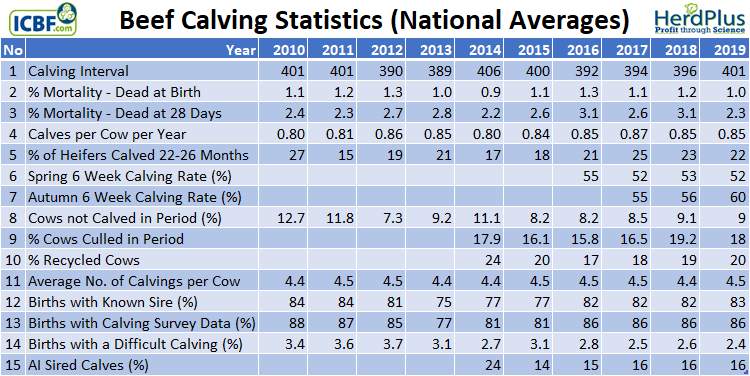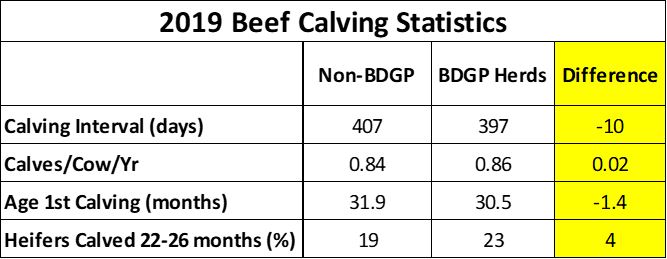ICBF has just published the 2019 beef calving statistics reports for suckler herds subscribed to the HerdPlus service. Average calving interval has unfortunately slipped from 396 days in 2018 to 401 days in 2019.
The national dairy herd has experienced a similar increase going from 387 days in 2018 to 390 in 2019. The exceptional weather events of 2018 undoubtedly left their mark. Wet and cold conditions which lasted into May, followed closely by a prolonged and severe drought led to fodder shortages on many farms which in turn severely impacted animal performance.
Calves per cow per year has remained stable at 0.85 with percentage of heifers calved 22-26 months seeing as slight decrease to 22%. Table 1 details all Key Performance Indicators (KPI’s) over the last 10 years.

Huge Variations
The difference between the top and bottom herds on these KPI’s is stark. The top 5% of herds are achieving a calving interval of 358 days with the bottom 5% at 474 days. Calves/cow/year is no different with the top herds achieving 1.06 calves against the bottom herds at 0.56.
BDGP Vs Non-BDGP herds
Approximately 24,000 herds have participated in the Beef Data & Genomics Programme since 2015. A fundamental element of the programme has been to improve the genetics of suckler cows within these herds. Table 2 compares the calving performance of herds in BDGP to those not participating in the programme.

BDGP herds were 10 days better on calving interval, 0.02 calves per cow higher with the average heifer calving almost 6 weeks younger.
Benefits of science and technology
Analysis was also done on herds participating in various DAFM funded programmes and HerdPlus. When the performance of these herds was compared to those not participating in any schemes and not subscribed to HerdPlus, it showed the biggest differences (see table 3).

The 5309 herds in BDGP, Knowledge Transfer and HerdPlus were over 2 weeks better on calving interval, 0.05 more calves/cow/year and first calvers were calving an average of 2.3 months younger.There is still some way to go for the national herd to achieve the required levels of fertility performance. The herds that are making the most gains are undoubtedly those that that are participating in DAFM programmes such as KT and BDGP and also using the HerdPlus service as a management tool to help them make more informed breeding and management decisions.
For any queries on the HerdPlus Beef Calving report please call ICBF on 023-8820452 or email [email protected]
